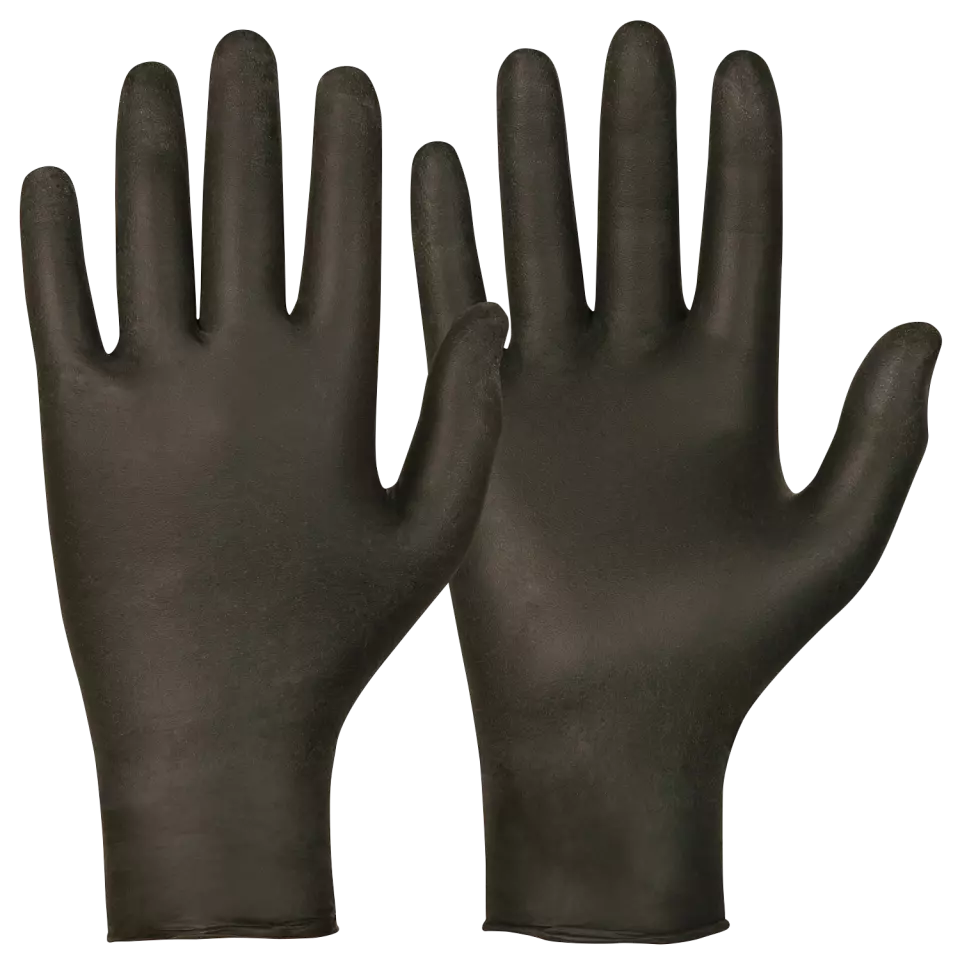These premium nitrile examination gloves combine superior tactile sensitivity with professional-grade protection, featuring a thickness of just 0.07mm while maintaining excellent elasticity and durability. The micro-textured fingertips ensure optimal grip in both wet and dry conditions, while the powder-free design reduces contamination risks. Certified for both medical use and food contact, these gloves offer comprehensive chemical resistance and meet the highest safety standards.
Product Features:
- Soft yet strong nitrile construction
- Micro-textured fingertips for enhanced grip
- Powder-free design
- Tight-fitting for precise handling
- Waterproof protection
Technical Details:
- Length: 24 cm
- Palm thickness: minimum 0.07 mm
- Weight: 3.5 ± 0.3 g
- AQL Level: 1.5
- Chemical protection against:
—40% Sodium Hydroxide
—30% Hydrogen Peroxide
—37% Formaldehyde
Recommended Applications:
- Assembly in electronics industry
- Photographic film handling
- Optics and laboratories
- Medical procedures
- Food handling
Standards:
- CE Category III (2777)
- EN 455 Medical examination
- EN 1186 Food contact
- EN ISO 21420:2020
- EN 374 Chemical protection
- MDR certified
These premium nitrile examination gloves combine superior tactile sensitivity with professional-grade protection, featuring a thickness of just 0.07mm while maintaining excellent elasticity and durability. The micro-textured fingertips ensure optimal grip in both wet and dry conditions, while the powder-free design reduces contamination risks. Certified for both medical use and food contact, these gloves offer comprehensive chemical resistance and meet the highest safety standards.
Product Features:
- Soft yet strong nitrile construction
- Micro-textured fingertips for enhanced grip
- Powder-free design
- Tight-fitting for precise handling
- Waterproof protection
Technical Details:
- Length: 24 cm
- Palm thickness: minimum 0.07 mm
- Weight: 3.5 ± 0.3 g
- AQL Level: 1.5
- Chemical protection against:
—40% Sodium Hydroxide
—30% Hydrogen Peroxide
—37% Formaldehyde
Recommended Applications:
- Assembly in electronics industry
- Photographic film handling
- Optics and laboratories
- Medical procedures
- Food handling
Standards:
- CE Category III (2777)
- EN 455 Medical examination
- EN 1186 Food contact
- EN ISO 21420:2020
- EN 374 Chemical protection
- MDR certified
These premium nitrile examination gloves combine superior tactile sensitivity with professional-grade protection, featuring a thickness of just 0.07mm while maintaining excellent elasticity and durability. The micro-textured fingertips ensure optimal grip in both wet and dry conditions, while the powder-free design reduces contamination risks. Certified for both medical use and food contact, these gloves offer comprehensive chemical resistance and meet the highest safety standards.
Product Features:
- Soft yet strong nitrile construction
- Micro-textured fingertips for enhanced grip
- Powder-free design
- Tight-fitting for precise handling
- Waterproof protection
Technical Details:
- Length: 24 cm
- Palm thickness: minimum 0.07 mm
- Weight: 3.5 ± 0.3 g
- AQL Level: 1.5
- Chemical protection against:
—40% Sodium Hydroxide
—30% Hydrogen Peroxide
—37% Formaldehyde
Recommended Applications:
- Assembly in electronics industry
- Photographic film handling
- Optics and laboratories
- Medical procedures
- Food handling
Standards:
- CE Category III (2777)
- EN 455 Medical examination
- EN 1186 Food contact
- EN ISO 21420:2020
- EN 374 Chemical protection
- MDR certified



